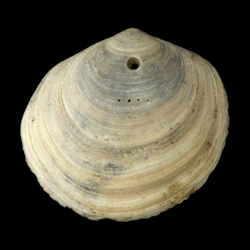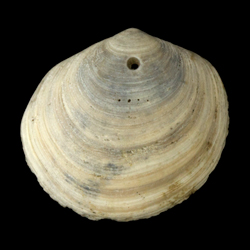
Ungulinidae

- Phylum: Mollusca
- Class: Bivalvia
- Order: Imparidentia
- Family: Ungulinidae
Overview
Common name: Diplodon clams
Key morphological features: The Ungulinidae are generally small or medium in size (~30mm). The shells are relatively thin, equivalve, inflated, and oval to subcircular in outline. The shell is composed of aragonite, and exterior sculpture is absent in some species and consists of fine commarginal lines. Valve interiors have an unterrupted pallial line and smooth interior shell margins. Species of Ungulinidae are heteromyarian, with a large, rounded posterior adductor muscle and a smaller, narrower, dorsoventrally elongated anterior adductor muscle. The heterodont hinge plate is small and contains two cardinal teeth (one of which on each valve is bifid, or diplodont, and is the root of the common name); anterior and posterior lateral teeth are either weak or absent. Source: Mikkelsen, P.M., and Bieler, R. 2008. Seashells of Southern Florida: Bivalves. Princeton, New Jersey: Princeton University Press. 503 pp.
Geological range: Cretaceous to Recent (Mikkelsen & Bieler, 2008).
Geographic distribution: A distributional map for modern Ungulinidae may be accessed from OBIS. A distributional map for ancient Ungulinidae may be accessed from the Paleobiology Database.
Diversity: There are 89 recognized living species of Ungulinidae and 14 genera (WoRMS database, unvetted). The Paleobiology Database recognizes 12 fossil genera and 145 fossil species of Ungulinidae (unvetted).
Paleoecology: The Ungulinidae are shallowly or deeply infaunal, marine or estuarine, filter-feeding bivalves. The Ungulinidae can be found in soft sediment benthic habitats at tropical to temperate latitudes worldwide. Source: Mikkelsen and Bieler (2008).
Phylogenetic status: Monophyletic. The molecular phylogenetic analysis by Taylor et al. (2007) supports the monophyly of Family Ungulinidae.
